#bhuta
Photo


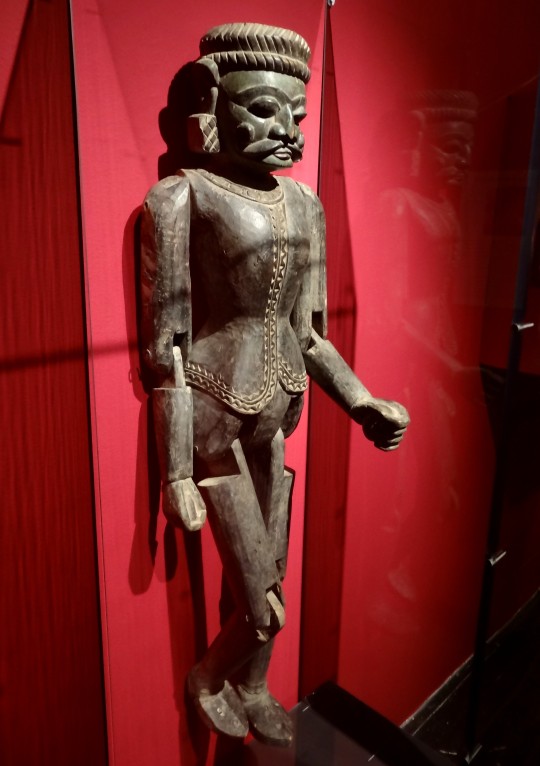
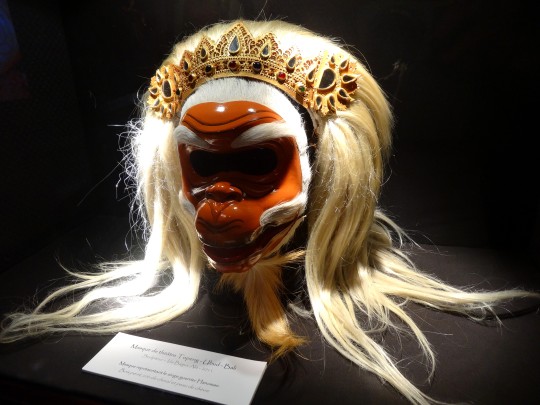
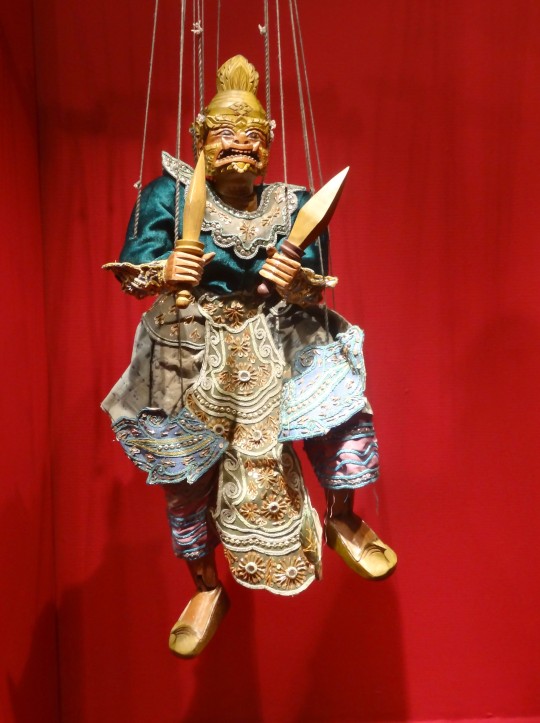

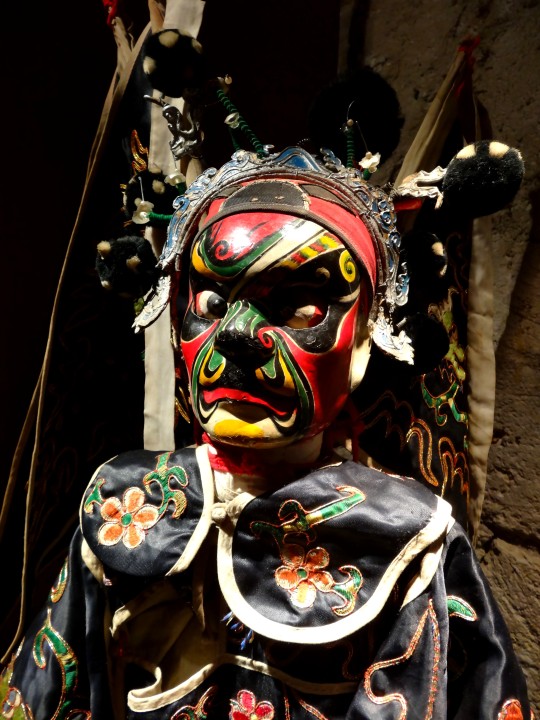
Retour à mon projet de présenter la plupart de mes 53880 photos (nouveau compte approximatif !)
2014. Marseille au printemps. A la Maison de l’Artisanat et des Métiers d’Art (la MAMA, désormais disparue hélas) il y eut une expo “Marionnettes et Théâtres d’Ombres d’Asie”.
- Takara - Karnataka, Inde
- Rama - Maharashtra, Inde
- un bhuta, esprit totémique - Inde
- Hanuman - Bali
- Taw Belu, Ogre de la Jungle - Rangoun, Birmanie
- Fujian
- Pékin
#souvenirs#marseille#MAMA#maison de l'artisanat et des métiers d'art#marionnettes et théâtres d'ombres d'asie#marionnette#mythologie#démon#monstre#divinité#takara#karnataka#inde#rama#bhuta#esprit#hanuman#singe#taw belu#ogre#birmanie#rangoun#chine#fujian#pékin#masque#maquillage#diable
7 notes
·
View notes
Text
Bhoota/Bhuta
A bhoota or bhuta is a supernatural creature, usually the ghost of a deceased person, in the popular culture, literature and some ancient texts of the Indian subcontinent. Interpretations of how bhootas come into existence vary by region and community, but they are usually considered to be perturbed and restless due to some factor that prevents them from moving on (to transmigration, non-being, nirvana, or swarga or naraka, depending on tradition). This could be a violent death, unsettled matters in their lives, or simply the failure of their survivors to perform proper funerals.
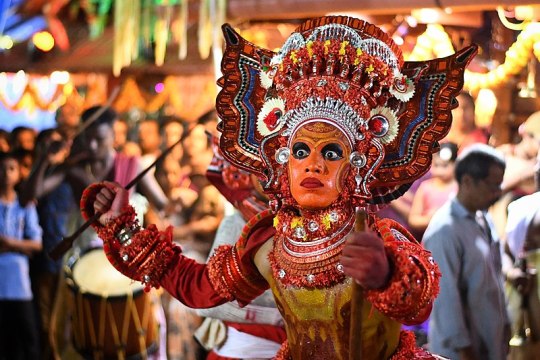
Belief in ghosts has been deeply ingrained in the minds of the people of the subcontinent for generations. There are many allegedly haunted places in the subcontinent, such as cremation grounds, dilapidated buildings, royal mansions, forts, forest bungalows, burning ghats, etc. Ghosts also occupy a significant place in the Bengali culture. Ghosts and various supernatural entities form an integral part of the socio-cultural beliefs of both the Muslim and Hindu communities of Bangladesh and Indian states of West Bengal. Fairy tales often use the concept of ghosts and references to paranormal activity are found amply in modern-day Bengali literature, cinema, radio and TV programmes. In Pakistan, the word jinn is used to refer to both the Arabic Jinns as well as bhootas. Influenced by Arabic and Persian mythology, bhootas in the Pakistani society have a more varied and fluid identity, ranging from Jinns from another realm made of fire, to ghosts of humans who died painful deaths.
Bhūta is a Sanskrit term that carries the connotations of "past" and "being" and, because it has connection with "one of the most wide-spread roots in Indo-European — namely, *bheu/*bhu-", has similar-sounding cognates in virtually every branch of that language family, e.g., Irish (bha), English (be), Latvian (but) and Persian (budan).
In Hindustani, Punjabi, Kashmiri, Bengali, Sindhi and other languages of the northern subcontinent, the concept of bhoots is extensively used in idiom. To be "ridden by the bhoot of something" (bhoot sawaar hona) means to take an obsessive interest in that thing or work unrelentingly towards that goal. Conversely, to "dismount a bhoot" (bhoot utaarna) means to break through an obsession or see through a false belief that was previously dearly held. "To look like a bhoot" (bhoot lagna) means to look disheveled and unkempt or to dress ridiculously. A house or building that is untidy, unmaintained or deserted when it should not be is sometimes pejoratively called a bhoot bangla.
The word has travelled far into Southeast Asia: it entered Javanese through Sanskrit as buta generally referring to a malevolent spirit/demonic giant which haunts places, it also refers to the genre of evil giants in wayang stories such as Buta Cakil. It has also undergone an evolution in the Malay world to mean a jinn-like creature mentioned in the as Malay Annals; there is a legend of such a creature that dwells in the plains of the Perak River with similar traits albeit of gigantic size giving its name to a town in north of the Malay Peninsula named Bota.
Bhootas are able to shape-shift into various animal forms at will, but are most often seen in human shape. However, their feet often reveal them to be ghosts, since they face backwards. As the earth is regarded as sacred or semi-sacred in many traditions of the Indian subcontinent, bhootas will go to great lengths to avoid contact with it, often floating a fraction above it, although sometimes as much as a foot off the ground. Furthermore bhootas cast no shadows, and speak with a nasal twang. They often lurk in the branches of specific trees and prefer to appear in white clothing. Sometimes bhootas haunt specific houses (the so-called bhoot banglas, i.e. bhoot bungalows), which are typically the places where they were killed or places which hold some other deep significance for them.
Many ghost stories in the region combine these elements. For instance, they might involve a protagonist who fails to flee or take countermeasures when they run across a bhoota. Instead, they unwittingly accept the bhoota's companionship (e.g., keep the ghost company as he/she walks through a forest, or (if a man) picks up the ghost in his car because it looks like an attractive woman waiting by the roadside at night). They become progressively aware that their companion is dressed entirely in white and has a strangely nasal voice, before the horrifying realization dawns on them that their companion's feet are turned backwards, or he/she is not casting a shadow in the moonlight, or is walking without actually touching the ground. Bhootas are said to seek out milk and immerse themselves in it. Consuming bhoota-contaminated milk is considered a typical route for bhoota- possession of humans, which has also been a frequent plot element in bhoota stories.
A particular kind of bhoota, that of a woman who died during pregnancy or childbirth, is known as a churel (dakini in Nepal and eastern India). Churels look like human women, but their feet are turned backwards or other features are turned upside down. They can change their forms at any time. Churel often try to lure young men at road crossings and fields or similar places. If a man is enamoured of a churel, it is believed that she will cause his death. There are, however, stories of people living with a churel, or even marrying one.
In many regions, bhootas are said to fear water and objects made iron or steel, so keeping either of these near at hand is believed to afford protection against them. The scent of burnt turmeric is also said to ward them off - as are the fibres of the Apiaceous herb bhutkeshi ("bhoota's hair"). As is typical of ghosts throughout the world, invoking the name of holy figures and deities is also said to repel bhootas. In some regions, sprinkling earth on oneself is said to shield against bhootas. According to Hinduism and all Dharmic Religions, the soul cannot be destroyed by any means. As a bhootaa is just the lost, or angry soul of a deceased person, Hindu exorcists will not (or cannot) destroy them, but perform instead a ritual from the Atharva Veda called atma-shanti which is just a modified shraadh (death anniversary) carried out by those haunted by a bhoota, promising it that they will do everything in their power either to ensure the rebirth of the bhoota or to finish the works left incomplete by it (or both). Such actions provide the bhoota with what it wants, causing it to cease haunting its victim for good.
The Bhutas, spirits of deified heroes, of fierce and evil beings, of Hindu deities and of animals, etc., are wrongly referred to as "ghosts" or "demons" and, in fact, are protective and benevolent beings. Though it is true that they can cause harm in their violent forms, as they are extremely powerful, they can be pacified through worship or offerings referred to as Bhuta Aradhana.
1 note
·
View note
Link
In the end of rainy season, I traveled on bike with my siblings and capture beautiful memories, while coming back we not forgot to try our bhuta….. Bhuta is a sweet corn
here is that lovely captured clip
0 notes
Photo

With a secular and democratic ideology, the Samajwadi Party believes in creating a socialist society Official Samajwadi party Account भाजपा हटाओ देश बचाओ 💢 - 𝐓𝐚𝐠/𝐬𝐡𝐚𝐫𝐞 𝐰𝐢𝐭𝐡 𝐬𝐨𝐦𝐞𝐨𝐧𝐞 💢 ♎ 𝐅𝐨𝐥𝐥𝐨𝐰 𝐦𝐞 ♎ᕦ( ⊡ 益 ⊡ )ᕤ @shayary.wala @socialist_somveer_yadav #shayari #saraalikhan #shayary_wala #somveerbareilly #somveerbhuta #somveerbareillywala #love #lovequotes #love_sharpei #tendencia #viralvideos #instamood #instapost #post #kamadiya #somveer_shayary_wala THESOMVEERYADAV SOMVEERBARAILLY #dimplehayathihot #medicalstudent #bhuta #ummedpurbhuta #haridwar #dimpleyadav 💯💯💯 (at Ex C.M. House Saifai) https://www.instagram.com/p/Co0ytNVv-pU/?igshid=NGJjMDIxMWI=
#shayari#saraalikhan#shayary_wala#somveerbareilly#somveerbhuta#somveerbareillywala#love#lovequotes#love_sharpei#tendencia#viralvideos#instamood#instapost#post#kamadiya#somveer_shayary_wala#dimplehayathihot#medicalstudent#bhuta#ummedpurbhuta#haridwar#dimpleyadav
0 notes
Text
Folksongs and sanskrit songs are pillars of indian culture
#folksongs#bihu#baul#folksongsofindia#lavani#chakri#alha#bhuta#ovi#burrakatha#pandavani#bhavgeet#nattupura#zeliang#ghodi#maand#kajri#thumri#birha#jagar#ravindrasangeet#sambalpuri.chhau#madhvimadhukarsanskritsinger#madhvimadhukarnews#umamohan#kuldeepmpai#mssubbulakshmi#madhavas#madhvimadhukarmadhuramband#madhurambandbymadhvimadhukar
0 notes
Text
Sadhguru enters Dhyanalinga Sanctum performs PANCHA Bhuta Kriya process 🙏🏽🪷🪷🪷🔱
6 notes
·
View notes
Text
Cue this music in the background on your choice -
Kantara Review and Analysis - A Video Essay

A small brief description about this movie:
Kantara is a Kannada-language film that focuses on a plot involving a conflict of land acquisition and the involvement of demigods to the story.
The film's highlight is how it represents the Tulu culture of celebrating the Bhuta Kola and its traditional dynamics around the film's plot.
Kantara made rounds around the Indian Cinema's space, and now it's being acknowledged around the world too by cinephiles.
Though Kantara have a predictable and common plot about the war between two groups of the same village and who wins the war, but -
The greatest strength of Kantara is the cinematic and thematic elements present in the whole film and how Rishab Shetty, the main lead along with the writer and director of Kantara, represents the Tulu culture of Bhuta Kola in the movie.
Here's my take on "What's the Value of Kantara" for so many people in India, especially the people who are accustomed to the ritual of Bhuta Kola in Karnataka and other areas.
This video gives a brief description of the Bhuta Kola, then went on to give review with how Rishab Shetty materialised this movie and provides an analysis on the story of Kantara, eventually summing up with a conclusion.
youtube
#movies#cinema#movie review#latest movie news#movie critic#kannada movies#kannada film#kannada film industry#kantara#rishab shetty#bhuta kola#tulu#Tulu Nadu#karnataka#indian mythology#india movie#kannada films#indian movies#sandalwood#Spotify#Youtube
10 notes
·
View notes
Text
youtube
"Bhuta Kala" by Meernaa
0 notes
Text
Bhuta Shuddhi, also known as Bhuta Shuddhi Kriya, is a profound yogic practice that aims to purify and balance the five elements within the human body. Derived from ancient yogic traditions, this technique is rooted in the belief that our physical and energetic bodies are composed of these fundamental elements—earth, water, fire, air, and space. Through dedicated practice, individuals can achieve a harmonious alignment of these elements, leading to enhanced well-being and spiritual growth. In this article, we will delve into the techniques and benefits of Bhuta Shuddhi Kriya as taught by Satyatrayoga.
Bhuta Shuddhi is a comprehensive system of purification that focuses on balancing and harmonizing the elemental forces within the body. According to yogic philosophy, imbalances in these elements can lead to physical, mental, and emotional disturbances. By purifying the elements, one can experience greater vitality, clarity of mind, emotional stability, and overall health
The Techniques and Practice
Bhuta Shuddhi Techniques incorporates a combination of physical, energetic, and meditative techniques. It typically begins with preparatory practices like gentle asanas and deep relaxation to calm the body and mind. Following this, specific postures and pranayama techniques are employed to activate and purify the corresponding body parts associated with the elements.
Mantra chanting is an integral part of Bhuta Shuddhi Kriya. Specific bija (seed) mantras are recited, invoking the energies of the elements and facilitating their purification. Alongside mantra chanting, visualization techniques are employed to enhance the practitioner's focus and concentration on the elemental qualities.
The practice concludes with meditation, allowing the individual to integrate the purified energies and experience a deep sense of tranquility, unity, and connection with the elements.
Benefits of Bhuta Shuddhi Kriya
Regular practice of Bhuta Shuddhi Kriya can yield a multitude of benefits. It enhances physical health, strengthens the immune system, and improves energy levels. The practice also helps to balance emotions, reduce stress, and promote mental clarity. Additionally, Bhuta Shuddhi Kriya can deepen one's spiritual journey, fostering a profound sense of interconnectedness with the universe.
Conclusion
Bhuta Shuddhi means “purification of the elements” and is a process of cleansing the 5 elements within the human system (i.e. earth, water, fire, air and space). Isha provide a unique opportunity for everyone to benefit from this science, which otherwise requires intense spiritual practices.
Keeps the system in harmony and balance
Prepares the system to handle powerful states of energy
Enhances the capabilities of the physical body, mind and energy system
1 note
·
View note
Text
Kantara Review: एक ऐसी फिल्म जो लंबे समय तक ज़हन में रहेगी
Kantara Review: एक ऐसी फिल्म जो लंबे समय तक ज़हन में रहेगी
Kantara Movie Review in Hindi: कन्नड़ फिल्म कांतारा अब हिंदी भाषा में भी रिलीज़ हो चुकी है, और जो भी इस फिल्म को देखकर आ रहा है, बस यही कह रहा है कि भाई फिल्में बनाने में अब साउथ का मुकाबला नहीं किया जा सकता. फिल्म में मुख्य किरदार में रिशभ शेट्टी हैं, उन्हीं ने फिल्म का निर्देशन किया है, स्क्रीनप्ले लिखा है और कोरियोग्राफ भी किया है। किरदारों का बेहतरीन अभिनय, आधुनिक बीट्स के साथ पारंपरिक कन्नड़…

View On WordPress
0 notes
Text

Bhuta maks of Panjurli
Smithsonian Museum of Asian Art
photo: David Castenson
116 notes
·
View notes
Text
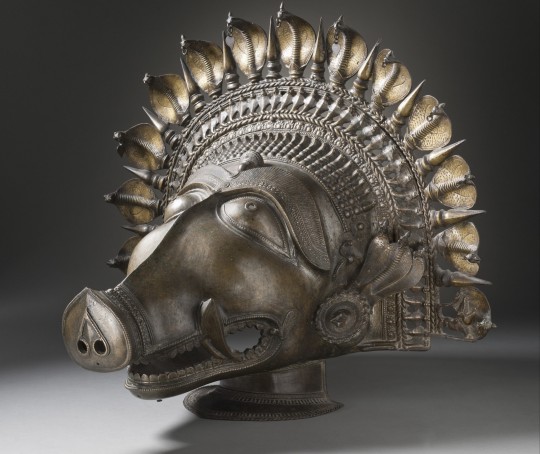


▪︎ Dancer's Headpiece in the Form of a Panjurli Bhuta (boar spirit deity).
Place of origin: Kerala, India
Date: 18th century
Medium: Copper alloy
#18th century#history of art#decorative arts#18th century art#history#art#dancer's headpiece#costume#panjurli#boar spirit deity#india#kerala
135 notes
·
View notes
Text
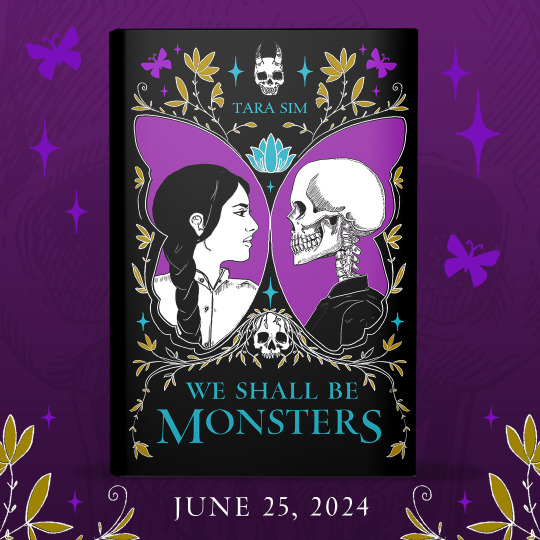
Frankenstein meets Indian mythology in this twisty, darkly atmospheric fantasy where the horror is not the monsters you face but the ones you create.
When her sister Lasya dies, Kajal vows to bring her back to life using any means necessary. But in preventing Lasya from rejoining the cycle of reincarnation, her sister’s soul turns corrupt and warps into a bhuta—a violent, wraith-like spirit hell-bent on murdering those who wronged it in life. With each kill, her sister’s bhuta becomes stronger and angrier, and Kajal’s chances of resurrecting Lasya with her soul intact grow slimmer.
Blamed for Lasya’s kills and declared a witch, Kajal is locked away with little hope of escape until two strangers who label themselves rebels arrive and offer to help free her. The catch: She must resurrect the kingdom’s fallen crown prince, aiding a coup to overthrow the usurper who murdered the royal family decades ago. Desperate to return to Lasya’s body, Kajal rushes to revive the prince…Only to discover that she hasn’t resurrected the crown prince, but another boy entirely.
All her life, Kajal has trusted no one but her sister. But with Lasya dead and rebels ready to turn her over to the usurper’s ruthless soldiers, Kajal is forced to work with the boy she mistakenly revived to find the right prince—before the rebels discover her mistake, or Lasya’s bhuta finally turns its murderous fury on the person truly responsible for her death: Kajal.
WE SHALL BE MONSTERS arrives June 25, 2024!
Be sure to preorder if you like gremlin girls, undead dogs, star-crossed love, and the horrifying ordeal of being known facing the consequences of your actions.
Preorder
Add on Goodreads
128 notes
·
View notes
Text
On the eve of March 11, the streets of the traditional village of Mengwi, Bali, flooded with monsters. The giant figures loomed over villagers’ heads, with grotesque smiles, protruding fangs, and extra arms and eyes. They danced in the night, each one brought to life by dozens of locals who moved as one, lifting, spinning, and shaking the monstrous creations.
The spectacle, known as the Ngrupuk parade, is one of several rituals meant to banish evil ahead of Nyepi and the Balinese New Year. While Nyepi is a day of mandatory rest and meditation for Balinese Hindus, the night before is quite the opposite.
The monstrous figures known as ogoh-ogoh—meaning to shake—represent Bhuta-Kala, evil spirits that need banishing, according to Balinese Hindu tradition. The figures, some as tall as a two-story building, are carried boisterously through town on bamboo platforms before their fiery demise.
Ngrupuk is a rather new Nyepi ceremony; ogoh-ogohs first appeared in Bali’s capital city Denpasar in the early 1980s. Since then, the annual parade has spread to surrounding villages. Local youth organizations build and carry the demonic effigies, and most crafters are teenagers and young men. Young children sometimes give creating a monster their best shot, while older master craftsmen are typically responsible for the most ornate ogoh-ogoh.
The monsters are traditionally burned at the end of the ceremony as an act of purification, but local painter and ogoh-ogoh collector I Ketut Nuada adds a few monsters each year to his growing collection-turned-museum.
Nuada once made ogoh-ogoh, but now leaves it to younger crafters and focuses instead on rounding up a few of his favorites after each parade. He collects whatever he can afford from among the effigies that survive a night of violent shaking. Over the last 12 years, Nuada has filled every inch of a warehouse in Mengwi with rescued and retired demons, some 31 in total.
“Every year there are more… and more technology,” says Nuada, speaking through a translator. The figures are traditionally made from paper, bamboo, and found materials, and brought to life through vigorous shaking. But in recent years, crafters have been experimenting with using electronics to light the monsters’ eyes, turn their heads, or raise their wings.
Anywhere from one to 10 people craft a single ogoh-ogoh between January and March. It takes dozens more to bring the demons to life. Before the event, disciples from the village temple will bless the ogoh-ogoh in a ritual where ceremonial offerings, called banten, are also presented.
Then the heavy lifting begins. Each figure is carried—along with lights and generators—by up to 40 locals on a raft-like bamboo platform. Dozens more walk ahead of the ogoh-ogoh carrying torches, or stand on the route performing traditional music. Everyone else gathers to take in the spectacle.
While many ogoh-ogoh will end their night in flames, some are stored away to be refurbished and sold for the following year, or—if they’re lucky—end up in Nuada’s collection. Photographer Matjaž Tančič captured the passionate creators, performers, and collectors who came together for Mengwi’s 2024 Ngrupuk event.
16 notes
·
View notes
Photo

With a secular and democratic ideology, the Samajwadi Party believes in creating a socialist society Official Samajwadi party Account भाजपा हटाओ देश बचाओ 💢 - 𝐓𝐚𝐠/𝐬𝐡𝐚𝐫𝐞 𝐰𝐢𝐭𝐡 𝐬𝐨𝐦𝐞𝐨𝐧𝐞 💢 ♎ 𝐅𝐨𝐥𝐥𝐨𝐰 𝐦𝐞 ♎ᕦ( ⊡ 益 ⊡ )ᕤ @shayary.wala @socialist_somveer_yadav #shayari #saraalikhan #shayary_wala #somveerbareilly #somveerbhuta #somveerbareillywala #love #lovequotes #love_sharpei #tendencia #viralvideos #instamood #instapost #post #kamadiya #somveer_shayary_wala THESOMVEERYADAV SOMVEERBARAILLY #dimplehayathihot #medicalstudent #bhuta #ummedpurbhuta #haridwar #dimpleyadav 💯💯💯 (at Ex C.M. House Saifai) https://www.instagram.com/p/Co0yraFPbTs/?igshid=NGJjMDIxMWI=
#shayari#saraalikhan#shayary_wala#somveerbareilly#somveerbhuta#somveerbareillywala#love#lovequotes#love_sharpei#tendencia#viralvideos#instamood#instapost#post#kamadiya#somveer_shayary_wala#dimplehayathihot#medicalstudent#bhuta#ummedpurbhuta#haridwar#dimpleyadav
0 notes
Text
Digimon & mythology: the Warrior 10 and spirits
In the genesis of the Digital World there was the Warrior 10, a group of mighty Digimon who each represented one of ten elemental attributes. When Lucemon rebelled against God, the Warrior 10 fought him. In the end, they managed to seal away Lucemon at the cost of their own lives. While the Warrior 10 are long since dead, they passed their data and abilities down to the many Digimon types. In addition, each member left behind two spirits who can be taken up by others to become special Digimon.
Designed for the anime Digimon Frontier, the Warrior 10 and their spirit descendants go outside of the normal evolution methods. For each element there is two spirits: human and beast. The holder of the spirits can switch between human and beast forms. In addition, the holder can merge the two into a fusion form. All spirit Digimon are given the special level of hybrid, but in general human spirits are equivalent to the Adult/Champion-level, beast spirits to Perfect/Ultimate-level, and fusion spirits to Ultimate/Mega-level. In other media outside of Frontier, the spirits have been treated as normal Digimon. In addition, the spirits of fire and light can fuse with other spirits to take on a transcendent form. In the anime, only the holders of the fire and light spirits got to reach their fusion forms but the other heroic spirits (darkness, ice, thunder, and wind) from Frontier have been given their fusion forms in other media. The villainous spirits (water, earth, wood, and metal) have only been given their human and beast forms, which is a big missed opportunity. To fit with being the descendants of legendary heroes, the spirit Digimon have a lot of mythological themes in their names. A lot of these were changed in the English translation to avoid religious references. The concept of different elements that make up the world can be found in many cultures, including the classical elements originating in Greece (earth, air, fire, and water), the Chinese Wuxing (fire, water, wood, metal, and earth), and Hindu Pancha Bhuta (earth, air, fire, water, and akasha, which can be translated as sky, space, or ether).
The Warrior 10 member representing fire is AncientGreymon and it passed its abilities down to dragon Digimon. No real mythological references with it so we move onto the human spirit of fire: Agnimon. Agnimon is a flaming martial artist that hones its mind and controls its temper with yoga. Its name comes from Agni, the Hindu god of fire. In the Vedas, Agni brought light into the universe and frequently acted as the intermediary between humans and the gods, making him one of the most important deities. While later texts downplayed his importance somewhat, he is still a major deity and is invoked in many ceremonies and traditions. He also carried over into Buddhism and Jainism. Agnimon doing yoga is another reference to India. The beast spirit is Vritramon (eng: BurningGreymon), a ferocious dragon born from data produced by scientists researching volcanoes. Vritramon's name comes from Vritra, an asura (demon or evil demigod) who personified drought and was the archenemy of Indra, the king of the Hindu gods and god of the sky and weather. In the Hindu text Rig Veda, Vritra blocked all the rivers in the world to horde all the water and force the people to suffer. Indra then fought Vritra and eventually slew him, releasing the water and ending the drought. In one version of the story, Agni was originally on Vritra's side before being convinced to side with Indra, which may be why their Digimon versions are linked. While most early depictions of Vritra had him as a humanoid, some later adaptations made him into a dragon. The fusion of the spirits of fire is Aldamon, who combines the intelligence of Agnimon and bestial power of Vritramon. Its name comes from Ardhanarishvara (Japanese doesn't have the "L" sound and uses the "R" sound instead, which is how "ardha" becomes "alda"), which is a fusion of the Hindu god Shive and his consort Parvati. Usually depicted as male on the right and female on the side and represents a fusion of the masculine and feminine powers of creation and how the feminine and masculine principles of the divine are inseparable. While Ardhanarishvara is a fusion of male and female, Aldamon represnets the fusion of human intellect and bestial power. Aldamon's attacks are maned Brahmastra and Brahmashira, legendary weapons from Hindu mythology. The transcendent form of the spirit of fire is KaiserGreymon (eng: EmperorGreymon) and it doesn't have any real mythological references other than harnessing ley lines, a concept found in new age pseudoscience.
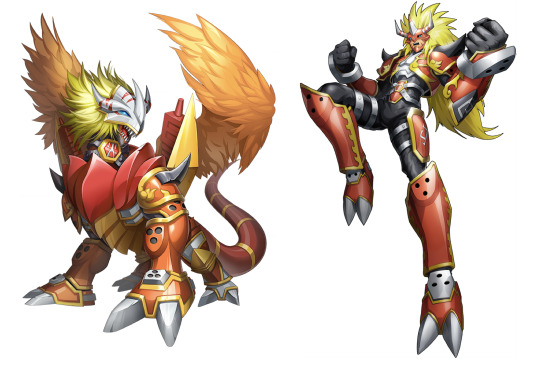


(left to right: AncientGreymon, Agnimon, Vritramon, Aldamon, KaiserGreymon). I have to compile images to stay under the limit
The Warrior 10 member representing light is AncientGarurumon, which passed its abilities down to beast Digimon. Once again, no mythological references so we'll move onto the human spirit. Wolfmon (eng: Lobomon) is a warrior empowered by a righteous spirit that contains a holy light. It doesn't have any real mythological references but its attack names are in German and the rest of the spirits do have a germanic and norse theme. Missed oppurtuinity to reference the faoladh, benevolent Irish werewoves, tbh. The beast spirit of light is Garmmon (english: KendoGarurumon), an extremely fast beast that hunts evil. It will never obey an evil creature, but will devote itself to a master with all its heart. Garmmon's name comes from Garmr or Garm, a wolf found in Norse mythology. It is described as a guardian of the gates of the bad afterlife Hel, giving it a similar role to the Greek Cerberus. Garmr is trapped by a chain in a cave called Gnipahellir and in the Porse Edda, will escape during Ragnarok where he and the god Tyr will fight and kill each other. Garmr is very similar to the more famous Fenrir and the two may be different cultural variations of the same legend. The fusion of the light spirits is Beowolfmon, a fighter who cooly measures up its enemy with human-like intelligence and tries to remain level-headed in combat. Its name comes from Beowulf, the hero of the germanic epic of the same name. In the epic, Beowulf slays the monster Grendel and then its mother and became king before dying in the process of slaying a dragon. The transcendent form of the light spirits is MagnaGarurumon, which again doesn't have any mythological references.


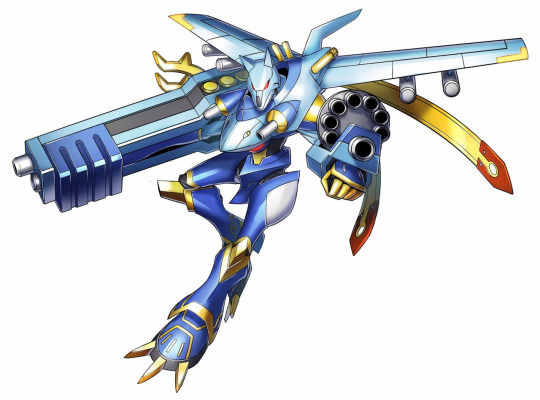
(left to right: AncientGarurumon, Wolfmon, Garmmon, Beowolfmon, and MagnaGarurumon)
Where there is light, there is darkness and the Warrior 10 member representing darkness is AncientSphinxmon, which passed its abilities down to mythical beast and demon beast Digimon. It is based on the great sphinx of Egypt. The Egyptian version of the sphinx was seen as a protector and was often associated with Ra, god of the sun. A bit ironic for the Digimon of darkness to be associated with a sun god. The spirits of darkness are unique in that there are two versions of each one, a corrupted and purified version. Also, I like that Digimon made the warrior of light a dog and the warrior of darkness a cat. The corrupted human spirit of darkness is Duskmon. It was born from the regrets of extinct Digimon species and exists to oppose holy Digimon. Duskmon doesn't have any real mythological references, but the corrupted beast spirit, Velgrmon, does. Velgrmon is a being of hatred as the proud Duskmon hates transforming into its ugly beast form. Velgrmon's name comes from Hræsvelgr, a gigantic eagle from Norse mythology that creates wind when it flaps its wings. The purified human spirit of darkness is Löwemon. It operates from within the darkness, but is not evil and instead hunts evil from the shadows. Löwemon wears a ring called Neeblinge, which comes from Der Rings des Nibelungen (The Ring of the Nibelung), an epic music drama by Richard Wagner. In the story, various gods, monsters, and humans battle to obtain the title ring, that will grant dominion over all. The story is named after and partially based on the germanic epic poem Nibelungenlied. The purified beast spirit of darkness is KaiserLeomon (eng: JagerLöwemon, whos unique armor lets it be incredibly fast and sharp enough to cut apart whatever it runs through. No mythological references here, it just furthers the visual connection to sphinxes. Similarly, there is no real mythological connection in the fusion form Raihimon (eng: Rihihimon). Its a humanoid sphinx that is so skilled at stealth that few realize it even exists. The name "Raihi" is a corruption of the German "Reich", meaning "empire".
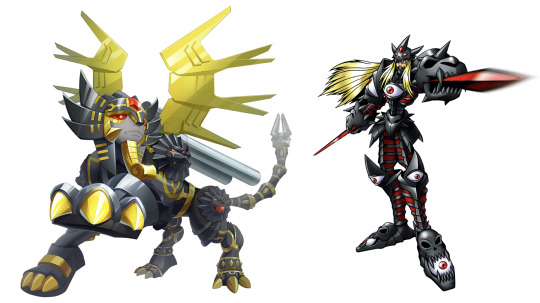


(left to right: AncientSphinxmon, Duskmon, Velgrmon, Löwemon, KaiserLeomon, Raihimon)
The Warrior of ice is AncientMegatheriummon, which passed its abilities down to mammal and icy snow Digimon. While it is not based on a myth, the megatherium is an extinct giant ground sloth. The human spirit of ice is Chackmon (eng: Kumamon). Its a cute tedy bear made of snow that carries military gear and claims to be part of an arctic defense force. No myths here so we go to the beast spirit of ice: Blizzarmon. Blizzarmon (eng: Korikakumon) is a ruffian with a love of battle that offers prayers to an ice god. There's no obvious mythological references other that it maybe being based on a yeti. The yeti is a mythical being said to live on the Himalayan mountains. It is supposed to be hairy and is associated with ice and snow at least. Weirdly enough, Blizzarmon's axes are named in the Igbo language of Nigeria, which is not a place known for snow. The fusion of ice is Daipenmon which not only has no connection to myths, it has no real connection to its prior forms. Not sure how two snowy mammals merge to become a mechanical ice shaver penguin dual-wielding popsicles.


(left to right,: AnceintMegatheriummon, Chackmon, Blizzarmon, Daipenmon)
The Warrior of thunder is AncientBeatmon (eng: AncientBeetlemon), which passed its powers down to insect Digimon. Digimon associates insects with electricity a lot. The human spirit of thunder is Blitzmon (eng: Beetlemon), a mechanical yet highly emotional electric wrestler with a heart of gold. Blitzmon is not based on mythology, but it is one of many references Digimon makes to the Japanese franchise Kamen Rider, which features a lot of martial artists wearing bug-themed costumes. The beast spirit of thunder, Bolgmon (eng: MetalKabuterimon) sacrifices mobility for incredible firepower as it turns itself into a tank. Its name comes from Firbolg, a mythical tribe of people who inhabited Ireland in the story collection Lebor Gabála Érenn. I found a few sources associating the name Firbolg with a thunder god, though as far as I can tell this appears to be a misconception. Bolgmon's profile also references scarabs, which were used in ancient Egypt that were used as seals and symbols of the sun due to an association with the god Kephri. The fusion spirit is RhinoKabuterimon. It's just an electric rhinoceros beetle. Nothing mythical about that. You may have noticed that the fire and light spirits have tons of references and the other spirits have a lot less. That comes down to the writing of Frontier where if you weren't the human holders of the fire and light spirits, the writers did not care about you and occasionally seemed to resent having you in the show to the point they turn you into a power-up for the heroes. The lack of interest in the other spirits and their holders is my biggest gripe with Frontier.


(left to right: AncientBeatmon, Blitzmon, Bolgmon, RhinoKabuterimon)
TheWarrior of wind is AncientIrismon (eng: AncientKazemon), who passed down its abilities to bird man and fairy Digimon. Iris is a minor Greek goddess who personified the rainbow and usually acted as a servant for other gods. The human spirit of wind is Fairimon (eng: Kazemon), a good-hearted gossip with the power to manipulate the atmosphere. Fairimon is based on modern interpretations of fairies. Fairies are found throughout European folklore, but are most famously associated with Ireland. The myths about them are highly diverse and they can range from benevolent to malevolent to having a completely alien sense of morality. More modern depictions of fairies often simplify them to small humans with insect wings and make them cute and friendly. This is the version that Fairimon is based on. Fairimon is also based on kamaitaichi, a form of yokai from Japanese folklore. They are associated with wind and dust devils and often look like weasels. The story about them says that they (often working in groups of three) will use sickles to cut people and then heal them so fast that the person will feel the pain of being cut but see no wound. One hypothesis to explain the origin of the stories was that minute vacuums in the air would make people feel pain with no wound. Fairimon is stated to be able to use is power over air to cause these vacuums. The beast spirit Shutumon (eng: Zephyrmon) is a mischevious trickster with the power to cast Mesopotamian spells. It is based on Shutu, a minor Mesopotamian god or goddess of wind. Design-wise, it also takes after two other Mesopotamian creatures. Lamashtu is a she-demon that appears as a fusion of human and various animals (fitting for a beast spirit) while Lilith was a demon (or class of demon) associated with women and birds. The fusion spirit is JetSilphymon, who can fly so fast it can't be seen and unleash hurricanes from its giant pinwheel. In the writings of the Swiss philosopher Paracelsus, Sylphs are elemental spirits of air.
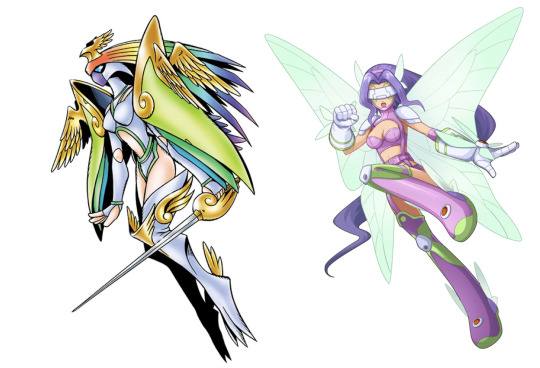

(left to right: AncientIrismon, Fairimon, Shutumon, JetSilphymon
The Warrior of earth was AncientVolcamon (eng: AncientVolcanomon), which passed its powers down to ore and mineral Digimon. The human spirit of earth is Grottemon (eng: Grumblemon), a temperamental artisan who can summon hammers from the ground. Grottemon is based on European folklore of gnomes and dwarves, diminutive people who lived underground and were typically great craftsmen. The gnome was also used by Paracelsus as an earth elemental and Grottemon's design is based on garden gnomes and their pointy hats. The beast spirit of earth is Gigasmon, a gigantic and violent beast with earthen skin baked into armor. Gigasmon is visually based on some sort of troll or ogre, but thats the closest it gets to a myth.

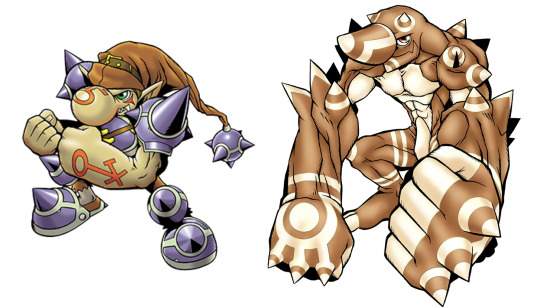
(left to right: AncientVolcamon, Grottemon, Gigasmon)
The Warrior of wood is AncientTroiamon, who passed down its abilities to plant Digimon. It is based on the Trojan horse from the Odyssey and Aeneid. The story goes that during the Trojan war, the Greek forces could not breach the walls of Troy. Odysseus had the Greeks feign retreat and leave behind a giant wooden horse as an offering to the goddess Athena. The Trojans brought the horse into the city as a trophy and that night, a force of men hidden in the horse came out and opened the city's gates, allowing the Greek army to invade the city. The human spirit of wood is Arbormon, a seemingly emotionless puppet that is actually keenly aware of its surroundings. Arbormon is based on a karakuri doll, mechanized Japanese puppets that were able to move on their own. The beast spirit of wood is Petaldramon, a giant and hungry plant dragon.
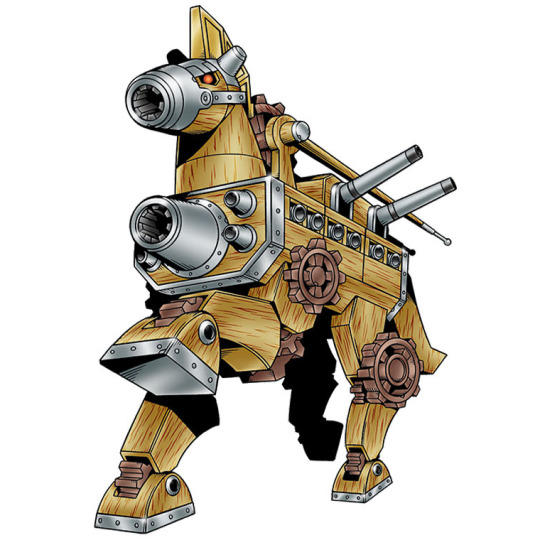
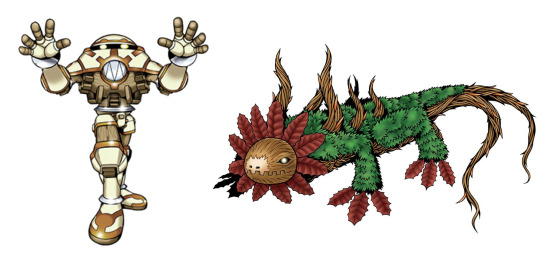
(left to right: AncientTroiamon, Arbormon, Petaldramon)
The Warrior of water is AncientMermaimon, who passed its abilities down to aquatic Digimon. AncientMermaimon is based on mermaids. Human-fish hybrids has appeared in virtually every culture that lived around water, though AncientMermaimon is based on the common European image of a mermaids. It holding a trident and having power over water is similar to the Greek sea god Poseidon. The human spirit of water is Ranamon, whose mood is as changeable and temperamental as the sea. Ranamon is also based on fish/human hybrids, though is more humanlike than most mermaids. Its name comes from the Spanish ford for frog, "rana", which is why it's dumb that more recent English translations like the card game keep trying to change it to Lanamon. The Japanese L/R confusion strikes again. The beast spirit of water is Calamaramon, a witch who excels at offense and defense. It is based on more monstrous versions of the human/fish hybrid.


(left to right: AncientMermaimon, Ranamon, Calamaramon)
The Warrior of steel is AncientWisemon, who passed its abilities down to mutant Digimon. It is all-knowing due to having access to the Akhasic Records, a spiritual compendium of all knowledge found in Theosphy and new-age spiritualism. The human spirit of steel is Mercuremon (eng: Mercurymon), a genius tactician and philosopher. The beast spirit of steel is Sephirothmon (eng: Sakkakumon), a bizarre being that possess the power of all 10 elements. Sephirothmon is based on the Sefirot tree of Kabbalah, a school of Jewish mysticism that attempted to explore the relationship between the eternal, unchanging god Ein Sof and the finite mortal world. Kabbalah is an extremely complex subject that I can't do justice with the short amount of research I'm doing for this post. The Sefirot tree, which Sephirothmon takes the shape of, is a concept in Kabbalah intended to illustrate the 10 methods or emanations of God's work in the material world. Each emanation also may represent a metaphysical world that people can pass through as they try to understand God. While the 10 spheres of the Sefirot tree each represent one of the emanations and their relationship to each other, the 10 spheres of Sephirothmon's body each represent one of the 10 elements that make up the Digital World and presumable how they and their associated Warrior 10 member relate to each other. The Sefirot tree is also supposed to help one gain wisdom and they further understand God and AncientWisemon and the steel spirits are associated with knowledge and wisdom.


When the power of all of the spirits come together, they become Susanoomon, a god who presides over destruction and regeneration. When the Digital World descends into chaos, Susanoomon will appear and destroy it so that a new one can take its place. Susanoomon carries a weapon called ZERO-ARMS: Orochi. Susanoo is the Shinto god of storms and wind that has been portrayed as both a hero that slays monsters and a wild and dangerous god of storms. This with with Susanoomon representing both destruction and regeneration. The most famous story involving Susanoo says that he was banished from the heavens after his bad behavior terrfied his sister, the sun goddess Amaterasu. Now on Earth, Susanoo encountered an old couple who told him of a mighty, eight-headed snake named Yamato-no-Orochi who had devoured seven of their daughters and would be coming back for the eighth and final one soon. Susanoo agreed to help them and transformed the final daughter into a comb to keep her hidden. He then brewed strong sake (an alcoholic beverage) and offered it to Orochi. After the snake got drunk and passed out, Susanoo killed it. In Orochi's tail, Susanoo found a sword that he gave to Amaterasu as a gift, leading to the two reconciling. ZERO-ARMS: Orochi is based on the sword found in Orochi's tail. There is an Orochimon, but it debuted before Susanoomon and the two are not connected.

#digimon#digimon frontier#mythology#hindu mythology#japanese mythology#warrior ten#warrior 10#kabbalah#fairy#norse mythology#beowulf#agnimon#lobomon#wolfmon#chackmon#blitzmon#beetlemon#duskmon#lowemon#fairimon#kazemon#grottemon#grumblemon#arbormon#ranamon#mercurymon#susanoo#susanoomon#lore#digimon lore
20 notes
·
View notes